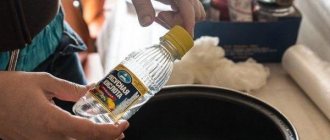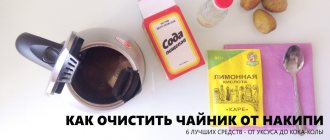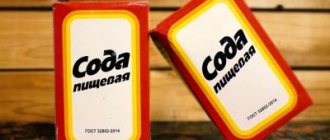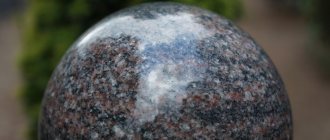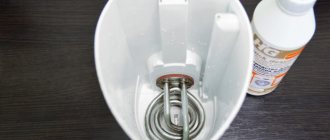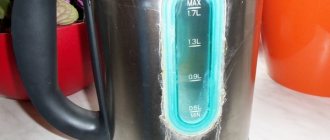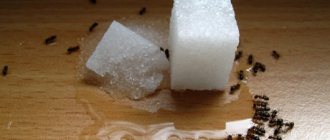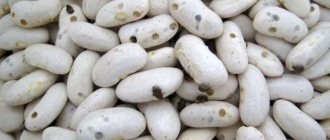- Dentifrice
- Vinegar
Questions about how and how to clean aluminum are relevant for many. Aluminum products are distinguished by their lightness, convenience and beautiful shine, but as a result of use they quickly darken, become covered with plaque or oxide, which spoils the aesthetic appearance and interferes with the full use of the item. To restore the shine and purity of aluminum, use folk remedies and special household chemicals, follow the recommendations for care and use.
Aluminum is used to make dishes, automobile parts, furniture elements, etc. It is resistant to rust, but is susceptible to carbon deposits, limescale, darkening and oxidation
How to get rid of soot
Since this has happened, and carbon deposits have nevertheless appeared on the walls of the aluminum pan, do not put off washing it for a long time: you won’t wash it off at all. Get down to business right away!
Here are a few ways to help restore your dishes to their original shine:
- Soaking in soapy water. The method is suitable for relatively light soot and if you react quickly to it. Usually, after soaking, minimal effort is enough to rid the walls of the pan of black color: just wipe them with a hard sponge. If it doesn’t help, then move on to the next method.
- Washing with soda. A traditional easy way to get rid of black deposits on the walls of aluminum cookware. Usually it is enough to rub the vessel with a hard sponge and soda for a while so that the carbon deposits begin to come off. If this does not happen, boil the dishes in a large container (basin or bucket), adding a glass of soda to the water.
- In the absence of soda, you can resort to regular table salt. If the contamination is inside, boil a strong saline solution until the carbon deposits begin to “peel off” from the walls. If outside, boil the pan in a deep container with the addition of a large amount of salt.
- Citric acid, used for preserving vegetables, will also help in removing carbon deposits from dishes. To do this, boil enough water in a saucepan to cover the “blackness”, add 2 tablespoons of lemon to it and boil for 10-15 minutes. After this, wash the dishes under running water using a special product.
- 9% vinegar. They pour it into the dishes with soot and leave it for 2-3 hours, after which they wash the pan with a hard sponge under running water.
Laundry soap 72%. Added in certain proportions to the above products to improve the effect:
- in soda - ½ piece;
- in vinegar - ½ piece;
It can also be combined with PVA glue in the ratio: 1/3 bar of soap (grate into shavings) and 1 tablespoon of glue per 4 liters of water. Boil the resulting solution.
Special chemical cleaning agents. For example:
- Schumanite is a rather aggressive solution, but very effective;
- Chister is also aggressive, but not so effective. Advantage - cheap;
- Amway is inferior in efficiency to Shumanite, but not as aggressive in cleaning properties.
These products should be used strictly according to the instructions to avoid unpleasant consequences!
To avoid unpleasant carbon deposits, try not to be distracted while cooking in aluminum cookware. And, of course, do not cook something in it that will certainly leave its mark inside. But if carbon deposits appear, don’t be discouraged and immediately start cleaning the pan, then the dishes will serve you for a very long time!
What to do to prevent scale formation
Cleaning a kettle from scale using potato peelings (photo source: Yandex.Pictures)
Since deposits form regularly, they must be removed frequently - once every 1-2 months. For preventive cleaning, products like a decoction of potato peelings, which must be boiled in a kettle, are suitable. To prevent severe scale, follow the rules:
- You can only boil filtered water, not mineral water;
- drain the remaining water from the bottom;
- a thick white layer of plaque cannot be scraped off with sharp objects - this will ruin the dishes;
- Wash the kettle weekly with a sponge or some soft brush;
- Drain the water in the evening or when dishes are sitting idle.
Don't ignore the cleaning process. With boiling, the persistent thick crust becomes stronger and stronger - the less often you clean off the salt deposits, the more difficult it will be to get rid of it.
Features of the material
Aluminum is a metal whose surface is painted silver with a slight white tint. This material has certain features that you should familiarize yourself with in advance. These include the following:
- High level of density. Products made from this metal are very durable and are not subject to mechanical damage.
- Good thermal conductivity. This figure is almost the same as that of silver, gold or copper.
- Protection from corrosive plaque. Aluminum structures never rust, but instead of rust, oxide may appear on their surface.
Electrical discharge machining
This technological process is based on changing the shape, size and roughness of the surface being processed and the physical and chemical properties of the material due to the effect of electrical discharges on the substance. Electrical discharge machining of metals is a technologically complex process that requires the operator to have a good understanding of his business.
Electrical discharge machining of aluminum
The operator must control the strength of the pulses and their frequency. A low pulse duration leads to anode erosion, and a high pulse duration leads to cathode deformation. The operator's role is reduced to the correct use of positive and negative impulses.
Types of EDM (electrical discharge machining). In modern industry, various technologies are used for cutting and processing metals; we will consider only the most effective of them:
- Anodic-mechanical treatment is the process of changing the physical and chemical properties of a metal in a liquid
environment. The method is based on chemical and mechanical effects on metal. It is worth noting that large growths formed during the chemical reaction are cut off by the guillotine; - Electroerosive cutting. The metal is wrapped around a given area with wire through which a current is passed. As a result of such cutting, a contour is formed. The processed part is cut by a guillotine or sent to other processing stages - grinding or milling.
Features of EEO include arbitrary shapes of electrode-tools. This method allows you to process complex structures that the guillotine and other mechanical methods of metal finishing cannot handle. The second feature of EEE is that any conductive materials can be processed electrically.
The main disadvantage is the low productivity (on average 10 mm/min) and the high energy consumption of this technology. Therefore, metal forming is more often used for industrial purposes. This method is characterized by high performance and low power consumption.
Aluminum polishing
Features of cleaning from sunflower oil
A viscous liquid is a lipid mixture that does not interact with water. Therefore, other methods and means are used for removal. Substances are selected that can penetrate the fat molecules and remove them from the surface.
Mustard
The product is used in powder form. The bulk mixture is diluted with hot water. The proportion is as follows - for 1 liter of water take 2 tbsp. l. mustard powder. The ingredients are mixed so that there are no lumps, and the liquid is poured into the bottle up to the neck. After 2-2.5 hours, the liquid is drained and the container is rinsed with clean water. Repeated cleaning procedure will improve the effect.
Flour
The bulk mixture is used due to its ability to absorb various liquids. The bottle is completely filled with water, after which flour is added. The result should be a white liquid. The container is turned upside down so that the dirty places are covered with the solution. After a while, a handful of rice is added to the vessel. After shaking, the bottle is emptied of its contents. After washing the vessel with water and detergent, rinse.
Boiling
This method comes in handy if you have accumulated a lot of dirty containers and don’t have enough time to clean them. A large saucepan is filled with dirty vessels and filled with water to the very top. A small amount of detergent is added to the water.
The pan with the container is placed on the stove over medium heat. Boiling should be carried out for 25-35 minutes. After turning off the stove, leave the contents of the pan to cool. The container is taken out and washed with clean water. It is advisable to use a piece of laundry soap instead of detergent.
Traditional methods of cleaning and polishing aluminum products
To give a shiny look to household items and decorative elements, use various recipes with simple and inexpensive ingredients.
Sour apple
To clean the container from carbon deposits, you need to cut the apple in half and rub the surface well with the half. The acid in the fruit helps to quickly remove soot.
Kefir or cucumber pickle
To combat dark spots, leave the dishes with brine or kefir inside for 12 hours. Next, you need to wash the product in warm water with a soft cloth.
Baking soda
Dilute soda with water to a paste consistency, which is applied to the metal and wiped with a sponge. This method will help to clean the product from plaque and dirt, and polish it to a shine.
Baking Soda - Aluminum Polish
Ammonia and borax
A homemade polishing mixture of borax (15 g) and ammonia (5 g) allows you to restore the beauty of the product and give the thing a mirror-like shine. The composition is applied with a sponge and rubbed well, then rinsed under running water.
How to clean aluminum from oxidation at home
If you do not clean aluminum from oxide and plaque in a timely manner, the darkened areas will increase in area over time, and subsequently it will be simply impossible to get rid of them. To carry out the hygienic procedure, you do not need to use specialized household chemicals. Cleaning aluminum from oxidation at home can be done using improvised means. Let's look at the best of them.
Mustard powder vinegar and salt
You can clean the outer surface of aluminum from oxides in the following simple way:
- In a small plate, mix equal amounts of table salt, dry mustard and nine percent table vinegar until a homogeneous consistency is obtained.
- Apply the resulting product evenly to the damp walls of the utensil.
- After fifteen to twenty minutes, rinse off the remaining mixture with slightly warmed water.
If it was not possible to clean the metal from oxidation the first time, the procedure can be repeated.
Salt
To clean an aluminum can that has turned black from oxidation, you can use regular salt. The method of application is very simple:
- mix forty grams of fine table salt and five milliliters of boiled water in a shallow container;
- apply the mixture to a clean sponge;
- intensively rub the area that has undergone oxidation;
- wait thirty to forty minutes for intense exposure.
When the specified period of time has expired, you just need to wash the utensils with any dishwashing detergent.
Acids
Acids effectively help clean aluminum from oxidation. Only for carrying out hygienic procedures is it better to choose organic compounds that have a gentle and gentle effect on the metal. Therefore, to clean an aluminum flask from darkening, it is recommended to use acids contained in lemon juice, brine, and kefir. To remove oxidation from aluminum you will need:
- completely immerse the flask, which has oxidized, in the chosen product;
- wait ten to twelve hours;
- After this time, wash the product in warm water and dry thoroughly.
The considered method is suitable not only for cleaning aluminum utensils from blackness. It can also be used to effectively remove grease from aluminum.
If the metal has heavy deposits and dirt, you should use cleaning products that contain oxalic acid. When used correctly, they can clean darkened items until they shine.
Cream of tartar
To clean aluminum spoons, crosses and other small parts from oxidation, experienced housewives advise using cream of tartar. To clean, you will need to follow these simple steps:
- pour ten liters of water into a large basin;
- pour one hundred and fifty grams of cream of tartar into the liquid and completely dissolve it;
- place objects stained by oxidation into the prepared solution and wait three to four hours;
- then walk over the surface of the parts with the hard side of the sponge;
- At the end of the procedure, rinse the aluminum in clean water.
Household chemicals
The most effective way to clean aluminum cookware is to use household chemicals. The most commonly used drug is “Mole,” which is used to combat blockages in drain pipes. A few spoons of powder are added to half a liter of water. Oxidized parts are placed in the created solution for two minutes, and then cleaned with a brush and soapy water.
Video
To figure out how to restore aluminum products to their original shine, radiance and cleanliness, we recommend watching informative videos:
Young mother, wife and part-time freelancer. Being a lawyer by training, I am accustomed to collecting and providing the most complete and reliable information. Constantly improves in the professional field and strives for personal growth and development.
The easiest way to remove scale and carbon deposits from the soleplate of the iron is with table salt. Pour a thick layer of salt onto the paper, heat the iron to maximum and run the iron over the salt bed several times, applying light pressure.
The dishwasher cleans more than just plates and cups. You can load it with plastic toys, glass lamp shades and even dirty vegetables, such as potatoes, but only without using detergents.
Before removing various stains from clothing, you need to find out how safe the selected solvent is for the fabric itself. It is applied in a small amount to an inconspicuous area of the item from the inside out for 5-10 minutes. If the material retains its structure and color, you can move on to stains.
If your favorite things show the first signs of gestation in the form of untidy pellets, you can get rid of them using a special machine - a shaver. It quickly and effectively shaves off clumps of fabric fibers and returns things to their proper appearance.
There are special traps to combat moths. The sticky layer with which they are covered contains female pheromones that attract males. By sticking to the trap, they are eliminated from the reproduction process, which leads to a decrease in the moth population.
Fresh lemon is not only suitable for tea: clean dirt from the surface of an acrylic bath by rubbing with half a cut citrus, or quickly wash the microwave by placing a container of water and lemon slices in it for 8-10 minutes at maximum power. The softened dirt can simply be wiped off with a sponge.
Stretch ceilings made of PVC film can withstand from 70 to 120 liters of water per 1 m2 of their area (depending on the size of the ceiling, the degree of its tension and the quality of the film). So you don’t have to worry about leaks from neighbors above.
Threads made of gold and silver, which were used to embroider clothes in the old days, are called gimp. To obtain them, the metal wire was pulled for a long time with pliers to the required fineness. This is where the expression “to drag out the rigmarole” came from - “to do long, monotonous work” or “to delay the completion of a task.”
An aluminum pan is lighter than pans made from other materials and heats up faster. But when it is used for a long time, it darkens, carbon deposits form on it, which “eats” into the metal. To ensure that your dishes last as long as possible in your household and maintain their original appearance, it is useful to learn a few simple tips on how to clean aluminum.
Aluminum products have certain properties
, which limit the use of these items in everyday life. Therefore, you should take into account certain nuances of cooking in aluminum cookware:
It will not be possible to scrape off carbon deposits from aluminum cookware. There are special ways to remove it.
Aluminum is a soft metal that is prone to oxidation
. Cleaning powders, steel wool and sponges leave scratches on its surface. However, even long-term use of aluminum products allows you to maintain their original condition, subject to certain recommendations:
Since dirt, dark spots, and whitish stains from food, water, and chemical detergents can easily form on aluminum products, you need to know how to clean aluminum cookware at home, choose the right cleaning products and not use harmful substances. How and how to clean an aluminum pan will depend on how dirty it is.
Paste GOI
If you try to remove small ones, the result will be the opposite: the screen will look dirty, dull, and covered with shiny dimples.
So, GOI pasta. It was developed specifically for polishing and grinding various surfaces back at the Soviet State Optical Institute (hence the name). You can find it in almost every optical store, and it is inexpensive. So, armed with such a block and everything necessary, we can begin the polishing process.
- Apply a drop of machine oil to the glass, then take a small piece of paste and begin to lightly rub the surface with a fiber cloth.
Let’s make a reservation right away: this process is not the fastest, because polishing the screen takes from 40 to 60 minutes (depending on the depth of the scratches and effort).
- You need to rub until you see that there is no oil or paste left.
- Then we add more and continue polishing until we see the result.
- At the end of the procedure, take a regular screen polish, a clean cloth, and continue cleaning the glass (2-3 minutes is enough).
If you put a protective film on your phone screen, but scratches appear on the body, then this method can also be used.
How are aluminum pans used?
Aluminum, by its nature, has some very unpleasant properties that significantly reduce the usefulness of cookware in everyday life.
- Firstly, this material strongly interacts with various organic acids, so under no circumstances cook soups and porridges in aluminum pans. They will turn sour in literally a few hours, presenting you with problems in the form of an unpleasant pungent odor and a damaged vessel.
- Secondly, aluminum cookware is good for cooking jam, compotes and other preparations that require rolling into jars and further long-term storage. But again, it is not recommended to leave it cooked in a pan: it will not turn sour as quickly as in the first case, but it can still spoil.
- Thirdly, before using an aluminum pan (to avoid unpleasant consequences), be sure to boil water in it with added salt. Proportions: 1 teaspoon of salt to 5 teaspoons of water.
- Fourthly, do not forget that dishes made of this material do not have a non-stick coating, so if you are distracted, the food will begin to burn and settle on the walls of the pan with black soot, which can be extremely difficult to clean. Also, the outer surface becomes black due to contact with a gas or electric burner.
- And fifthly, don’t try to just “scrape off” the carbon deposits. Read the tips below and you will keep your dishes safe and in pristine condition.
Cream of tartar
It is considered the very first variation of plaque erasing. However, finding this on the modern market is problematic. To make such a stone yourself, you will need an ordinary bottle of fruit alcohol, which is stored in a cool place and in a horizontal position. Crystal accumulation is also common inside wine tanks. But there is one peculiarity: it may take 5-7 years for the stones to accumulate. Before processing, the crystals are diluted in a small amount of boiling water (to a pulp state), and after cooling, it is applied to a napkin, which is used to wipe the object. Such a stone is an effective remedy against stains, and is also gentle. Only a person will have to spend several hours to achieve the desired result. But the negative aspects make this version not popular among the people.
Cream of tartar
Cleaning aluminum from corrosion and oxide
This circumstance applies more to the restoration of objects that are not used in dining rooms and kitchens. For example, you can find a special paste to add shine to car parts. A small amount of it is applied to a rag (hardness does not matter), and the damaged part is thoroughly wiped. This way you can quickly clean aluminum from rust and oxides, and the part will acquire a new appearance. As for tools with metal bristles, their use is highly not recommended. Otherwise, the spare parts will show signs of mechanical impact, which will be clearly visible in the sun. During the period of cleaning aluminum from corrosion, it is necessary to use personal protection, especially if the work is carried out indoors. These special products can release harmful components that damage the skin and respiratory system.
Cleaning aluminum parts from oxide
Table vinegar
This is an “old-fashioned” technology that has stood the test of time. All you need to prepare is a certain amount of wine vinegar or citric acid. In some cases, you can prepare a gentle preparation and dilute it in a ratio of 1 to 10. If the object is covered with burnt on the inside, then the mixture is poured inside and put on high heat and brought to a boil. Over the entire period of time, a reaction will occur and unnecessary traces will be eliminated. As an alternative, you can take 6% vinegar or lemon juice from natural fruit. If prints are formed on the outer part, the element is completely immersed in boiling water for a certain period. Immediately after boiling, you cannot cool a pot or pan in cold liquid, because any metal reacts poorly to sudden temperature changes. It is wiser to wait a while and wipe the surface with a sponge. You should also always remember the rules for using such utensils, and if the situation gets very bad, table vinegar is unlikely to help against stains. Here you will need more serious procedures, or the purchase of another copy.
Vinegar
Features of cleaning aluminum
When it is not possible to wash aluminum cookware, you can only use more effective cleaning options. There are 2 types of removing oxides and dirt at home:
- Mechanical - used on smooth surfaces with simple relief.
- Chemical, or etching, is effective on complex planes with small details.
To work, you will need a standard set of available materials: water, vinegar, baking soda, lemon juice, liquid detergent. All you need is a soft towel, a sponge, a scraper and a large container. People widely use oxalic acid, apples, kefir, and onions. You can buy a ready-made chemical composition, but the homemade version is more economical and environmentally friendly.
Aluminum cookware is valued for its lightness and ease of cooking. When new it has an impeccable appearance, but gradually becomes dull and becomes covered with a persistent coating of dirt and oxides. Usually they clean it with universal products, but they will not restore its former shine and beauty. To get maximum results, there are a number of recommendations:
- Wash dishes only after they have cooled completely. Immersion of hot metal under water leads to deformation.
- Residues of food burned on the bottom must not be removed with a knife, hard sponge or other sharp instrument. Such manipulations permanently leave scratches on the metal. It is necessary to fill the dishes with warm water and add a little liquid cleaner. After 30 minutes, everything will fall off on its own, and it will not be difficult to wash off the dirt with a regular sponge. As a last resort, use wooden or plastic spatulas.
- Clean aluminum accessories only by hand. The dishwasher is not suitable due to the high water temperature.
- Do not use strong acids or alkalis for cleaning. They instantly darken the surface.
It is not advisable to use excessive force when cleaning the inside of pots. As a result of heating the damaged metal, harmful oxidation salts easily enter the food.
General recommendations
Aluminum is a soft metal that requires careful handling during operation and cleaning. To clean products from various types of contaminants and not damage the material, follow simple recommendations:
- Do not use metal scrapers or brushes, hard scourers or sharp objects . These tools damage the surface, leaving scratches and other unsightly marks. After such treatment of the dishes, aluminum particles can get into the food, which will negatively affect the taste of the dish and its benefits.
- Do not clean aluminum alloy products with abrasive agents (sand, powder).
- Kitchen utensils should be washed only after they have cooled down . Hot metal deforms when interacting with water, and it is almost impossible to return its original appearance on your own.
- such as acids or alkalis for cleaning They spoil the aesthetic appearance, and the resulting chemical reaction can lead to the release of toxins or heavy metals that are hazardous to health.
- To achieve the desired effect, choose a cleaning method and cleaning product based on the type and degree of contamination .
- Do not wash aluminum cookware in the dishwasher . Temperature changes negatively affect the metal and increase the risk of deformation and corrosion.
- To make the product shiny, polish the surface with a sponge dipped in a solution made from borax and ammonia in a ratio of 3:1.
Aluminum products require a special approach to cleaning and operation to avoid deformation, scratches and irreversible damage
Do not wash aluminum cookware in the dishwasher.
How to remove fresh stains
If the paint coat is recently applied, there is no need to use chemicals. Simply moisten the sponge in warm water and rinse the surface. To clean your brushes after use, leave them in water for 15 minutes and then hold them under pressure. When the contamination is fresh, but has landed on a surface that is quickly eaten into, additional products will need to be applied.
Sunflower oil and laundry soap
It is very difficult to remove even fresh paint stains from clothes, and the result directly depends on the type of fabric. Immediately after the substance gets on clothing, it is necessary to treat the area with sunflower oil and soak for 15 minutes in hot water, after rubbing with laundry soap. After soaking, you should wash the clothes in a washing machine or by hand.
White Spirit
Paint stains can be removed from most fabric surfaces using white spirit. To wipe off paint with a solvent, you need to apply a small amount to a rag or sponge and gently rub it over the dirt.
Isopropyl alcohol
Isopropyl alcohol is an organic solvent. To remove dirt from the surface, you need to apply alcohol and wash it off after a few minutes. If the paint begins to eat in, you should use a hard sponge.
Nail polish remover
You can remove acrylic paint from clothing or fabric surfaces using nail polish remover that does not contain acetone.
This is important to preserve the structure and color of the material. Nail polish remover effectively removes only fresh stains
Ammonia and vinegar
In cases where it is not possible to remove the paint using other methods, you can use vinegar and ammonia. It is enough to soak a cotton pad or soft cloth in the solutions, and then treat the stain until it completely disappears.
Hair fixation spray
Applying hairspray to fresh acrylic paint affects its texture and makes it easy to wash off. The composition peels off from exposure to the varnish, and it is enough to treat the surface with a rag or sponge.
How to remove grease from the glass surface of a teapot?
You need to wash the glass version very carefully. It is unacceptable to use abrasives as they will leave scratches on the surface of the product. It is best to use household chemicals: Frosch, Cillit, Shumanit in liquid or gel form. You need to apply the products with gloves and only to dirty areas so that the active substances act on the remaining oil and do not damage the surface. After application, you can leave them for 15-20 minutes and rinse thoroughly with warm and then cold water. If necessary, you can boil the kettle again if it has been treated not only from the outside, but also from the inside.
It is better to use gloves because household chemicals are toxic and cause skin irritation. It's also a good idea to keep glassware away from fatty foods in the future, as high temperatures can cause cracks from flying hot oil.
Rules for use and cleaning at home
The first thing that needs to be said is about preparing new aluminum pans for use. It consists of creating a protective film on the surface of the dishes. It's very simple:
- Wash and dry the pan.
- Pour refined vegetable oil into the bottom. Apply a thin layer, just enough to cover the bottom.
- Add a tablespoon of salt there.
- Heat the pan, shaking it so that the oil and salt are distributed along the walls.
- When the characteristic smell of burnt oil appears, turn off the heat.
- Allow the dishes to cool naturally.
A few rules regarding the use of aluminum pans:
- You cannot store food in them after cooking
. This will avoid the formation of oxides on the surface of the metal, and therefore its darkening. - Preventative cleaning of carbon deposits. It is better to carry them out at least once a week. In this case, there will be no need to use “heavy artillery” in the form of multi-component compositions. For prevention, it is enough to use ordinary soda and a foam sponge.
- To wash aluminum pans, use foam rubber or other soft sponges. The only abrasives that can be used are soda and plastic sponges.
- From “purchased” chemicals, you need to choose those products that indicate that they are suitable for aluminum cookware.
If we are talking about industrial production products, then you should choose those whose PH is neutral
. Typically, their name contains the words “liquid/gel for cleaning metals.” They have a complex chemical formula, due to which they cope with severe pollution. Such products should be washed off very carefully. As for soda-containing products, they should not be used daily.
It should be noted that soda, both plain and soda ash, gradually destroys the protective oxide film on the surface of aluminum. This is not critical provided that cleaning with the use of these substances is not daily, and the procedure for restoring the protective film is carried out at least once. The process is the same as for preparing a new pan for use: calcining the pan with vegetable oil and salt.
Aluminum cookware is universal in its application and easy to use. But to ensure that its operation does not cause problems, you must strictly follow the rules for working with it.
Aluminum saucepans, despite the abundance of new, more practical and less demanding materials, are still very popular. Experienced housewives know how to handle them correctly and how to clean aluminum cookware at home if something is burnt in it or it is covered with a greasy coating.
You shouldn’t say goodbye to pots, pans and ladles that you inherited from your mother or grandmother just because you don’t know how to remove carbon deposits and grease from them. It's actually very simple. And unlike Teflon or ceramic cookware, aluminum cookware can be cleaned with the simplest means at hand.
So, what is aluminum and what are its features? The answers to these questions will come in handy when it comes to choosing a cleaning agent for this material.
- It’s metal, but soft enough—bending an aluminum spoon costs nothing even for a first-grader. Therefore, accordingly, aluminum products cannot be cleaned with abrasives and metal brushes. Also, you should not rub or press on it too much - the dishes will become deformed.
- Aluminum reacts with alkalis and acids. This means that cleaning products containing these substances are not suitable for treating such metal. It will darken, become dull and may oxidize - cooking food in such a container and eating from it is unsafe for health.
- Do not clean aluminum cookware with powders for cleaning sinks and tiles, especially with washing powder, chalk or products containing lime. All these means will make it no longer suitable for use.
As for the dishwasher, the faithful kitchen assistant of modern housewives, in this case you will have to forget about it. Firstly, aluminum plates and spoons in it may not be washed properly. Secondly, drops and streaks of water will remain on them. And thirdly, aluminum will darken and tarnish from such treatment - simply no one will want to eat from such a plate because of its unkempt and unappetizing appearance.
What not to do
Do not leave dishes in the sink after eating. If you immediately remove food debris from spoons and other objects, the rate of plaque formation will be significantly reduced. To avoid damaging the metal, use only soft cleaning agents: brushes, sponges. Rinsing, like washing from dirt, should be done thoroughly. Then there will be no residue left on the surface. Do not use abrasive substances. The use of concentrated acid may damage the integrity of the metal's protective coating.
How to clean aluminum oxide at home
Aluminum is susceptible to oxidation. As the product is used, the oxide layer grows, which leads to the appearance of dark spots that cover the entire surface or individual parts.
You can clean oxide and blackness at home using available folk remedies:
- Soda. Dissolve the product in a small amount of water to obtain a paste. Apply the mixture to the stain and work the surface in a circular motion.
- "Coca Cola". Fill the item with soda and after 1.5 hours wash it with water.
- Sorrel. Place a bunch of fresh sorrel in a container that needs cleaning and fill it with water. Place the dishes on the stove and boil the mixture over low heat for 30 minutes. Drain the solution and rinse the product.
- Lemon acid. In a saucepan, combine 2 tbsp. l. citric acid and 1 liter of water. Boil the solution for 15-25 minutes, depending on the degree of contamination, and then wash the container with clean water.
- Apple. Rub the darkened, oxidized mark with half the fruit and leave for half an hour for the malic acid to take effect. After the time has passed, wash the container with detergent.
Baking soda effectively fights oxidation and dark stains on aluminum surfaces. The product is suitable for local application or large-scale cleaning of large items
Mustard powder, vinegar and salt
To remove blackness from the outer walls of the product, prepare a mixture of equal parts of table salt, vinegar and dry mustard powder. Mix the ingredients until smooth. Using a sponge, apply the mixture to the stains and after 15 minutes, rinse with warm water.
Salt
To clean aluminum, combine 2 tbsp. l. salt and 1 tsp. warm water. Mix the ingredients and apply to a sponge. Rub the mixture into the stained area, leave for half an hour, and then wash the pan.
Saline solution is a safe aluminum cleaner that breaks down dirt, removes blackness and helps remove carbon deposits.
Acids
To clean aluminum products, use products containing natural acids: kefir, lemon juice, yogurt, cucumber pickle. Fill the container or part with the selected product and leave overnight. In the morning, rinse the product and wipe dry.
Cleansers based on oxalic acid will help get rid of significant blackening. Apply the drug to the surface, wait the time indicated on the package, and then rinse with water.
Cream of tartar
You can remove dark spots using cream of tartar. To clean, dissolve 3 tbsp in 5 liters of warm water. l. product and soak the product in the resulting solution for 2-3 hours. Remove any remaining dirt with a soft sponge, rinse with warm water and wipe dry.
Darkening, dirty stains, soot and other contaminants spoil the aesthetic appearance of aluminum products. You can cope with problems at home using folk remedies or special household chemicals.
Choice of product
The disadvantages of aluminum include the softness of the metal and its instability to abrasive influences. If you plan to keep your pans shiny for longer, avoid using wire wool, brushes, abrasive sponges, or sandpaper.
Even the use of a melamine sponge, which can rid the metal of the oxidation film, will affect the appearance of the utensils - the shiny surface will become dull due to numerous micro-scratches.
Polishing with GOI paste will help return it to ideal condition - rub a rag soaked in a solvent with a piece of hard paste, and then polish the metal surface to a mirror shine.
When choosing how to clean aluminum, you should pay attention to substances that are almost always at hand for any housewife. These include:
- laundry soap;
- baking soda;
- salt;
- table vinegar;
- lemon juice or citric acid;
- dairy products;
- cream of tartar;
- office glue;
- oxalic acid, etc.
When cleaning aluminum utensils from blackness, stains and carbon film, use brushes with semi-rigid polymer bristles, foam sponges, cotton or microfiber napkins, and rags.
If advice on how to clean a burnt pot or frying pan at home does not help you cope with the task, you can try using special products for cleaning porcelain and glass. Or resort to such means as “Chister”, “Bagi Shumanit”, “Oven Cleaner”, etc. Use special equipment according to the manufacturer's instructions.
New aluminum utensils shine attractively, but after some time of regular use they become dull and become covered with unsightly stains. Usually, housewives use the same usual composition for washing aluminum dishes as for pots and pans made of other materials, primarily stainless steel.
But this is the wrong approach. Conventional dishwashing detergents can clean the aluminum surface of ordinary contaminants, but they will not save you from oxidation and will not be able to completely protect you from the gradual formation of plaque, which, under regular exposure to high temperatures, turns into carbon deposits over time.
Therefore, as necessary, including if food is accidentally burnt during cooking, effective cleaning methods for aluminum cookware should be used, using homemade or special products.
